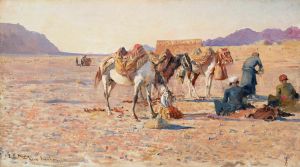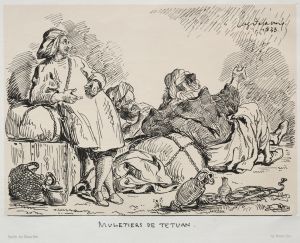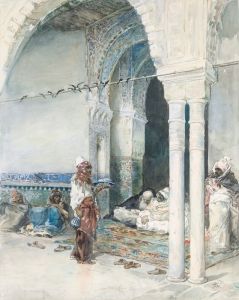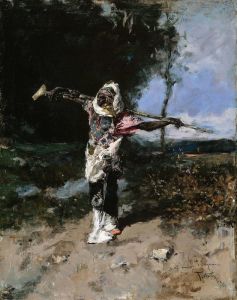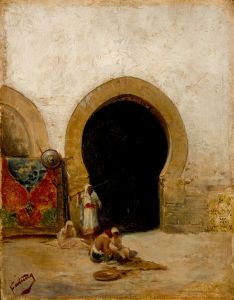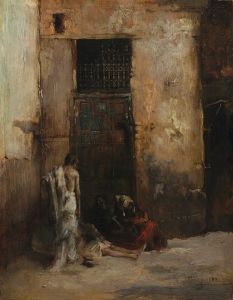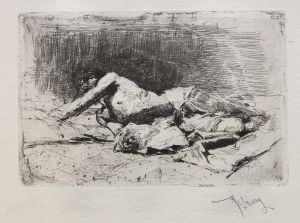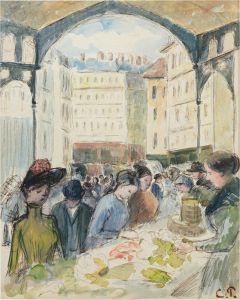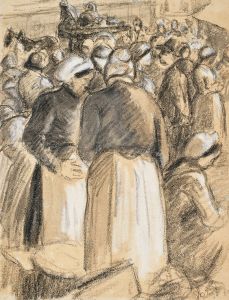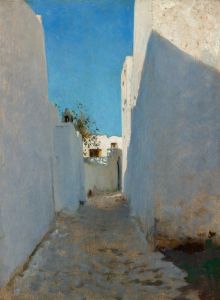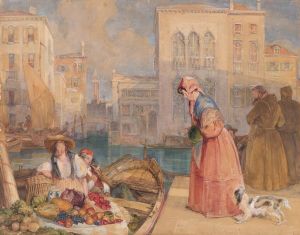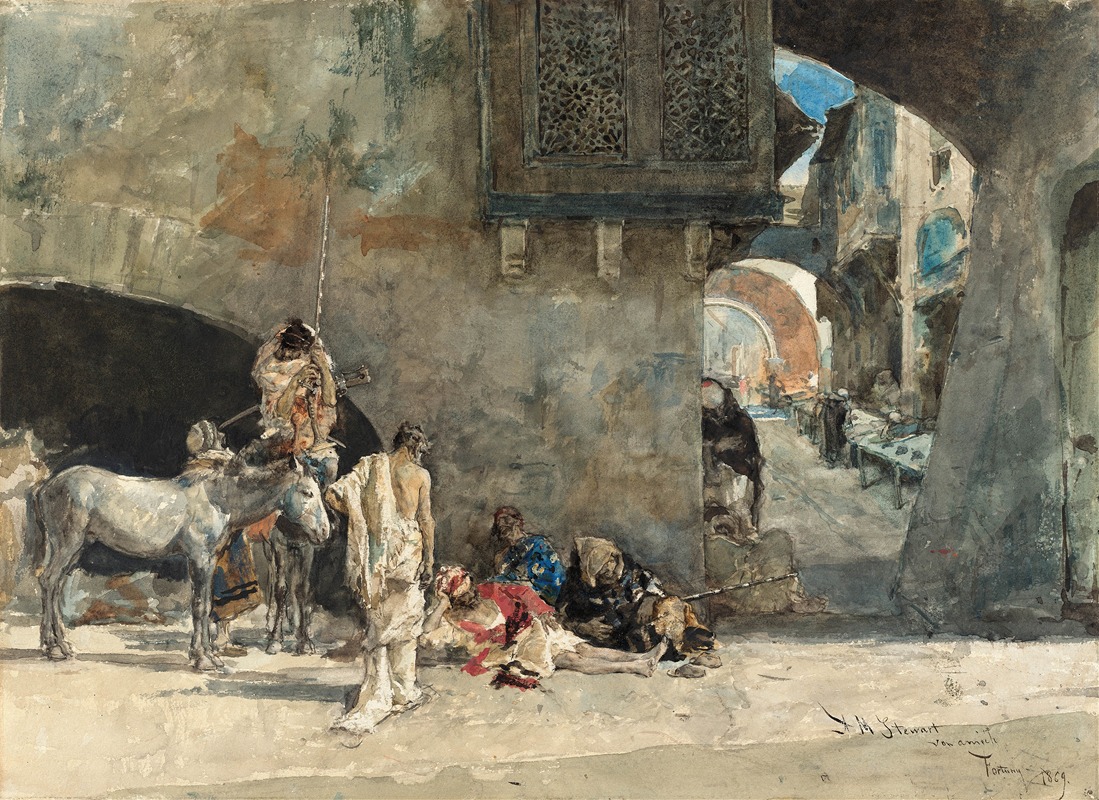
A Street in Tangiers
A hand-painted replica of Mariano Fortuny Marsal’s masterpiece A Street in Tangiers, meticulously crafted by professional artists to capture the true essence of the original. Each piece is created with museum-quality canvas and rare mineral pigments, carefully painted by experienced artists with delicate brushstrokes and rich, layered colors to perfectly recreate the texture of the original artwork. Unlike machine-printed reproductions, this hand-painted version brings the painting to life, infused with the artist’s emotions and skill in every stroke. Whether for personal collection or home decoration, it instantly elevates the artistic atmosphere of any space.
"A Street in Tangiers" is a painting by the Spanish artist Mariano Fortuny Marsal, also known as Marià Fortuny i Marsal. Fortuny was a prominent 19th-century painter, renowned for his detailed and vibrant works that often depicted historical and Orientalist themes. Born in Reus, Catalonia, in 1838, Fortuny became one of the most influential Spanish painters of his time, and his works are celebrated for their technical precision and vivid use of color.
The painting "A Street in Tangiers" is a fine example of Fortuny's interest in Orientalism, a genre that fascinated many European artists in the 19th century. Orientalism refers to the depiction of Eastern cultures, often romanticized and exoticized, by Western artists. Fortuny's travels to North Africa, particularly Morocco, greatly influenced his work. He visited Tangiers in 1860 as part of a military campaign, and the experience left a lasting impression on him, inspiring numerous paintings and sketches.
In "A Street in Tangiers," Fortuny captures a bustling street scene in the Moroccan city. The painting is noted for its meticulous attention to detail and the vibrant interplay of light and shadow. Fortuny's skillful use of color brings the scene to life, with rich, warm tones that evoke the atmosphere of a sunlit street. The composition is dynamic, drawing the viewer's eye through the scene and inviting them to explore the various elements depicted.
The painting reflects Fortuny's keen observation of daily life and his ability to convey the essence of a place through his art. His interest in capturing the nuances of light and texture is evident in the way he renders the architecture, clothing, and figures in the scene. Fortuny's work often blurs the line between realism and romanticism, and "A Street in Tangiers" is no exception, offering a glimpse into the artist's interpretation of Moroccan culture.
Fortuny's contributions to art were significant, and his works influenced many artists who followed. His approach to color and light, as well as his ability to capture the spirit of a scene, earned him a place among the great painters of his era. "A Street in Tangiers" remains an important piece within his oeuvre, showcasing his mastery of the Orientalist genre and his enduring fascination with the cultures he encountered during his travels.
Today, Fortuny's works are held in high regard and can be found in major museums and collections around the world. "A Street in Tangiers" continues to be appreciated for its artistic merit and its role in the broader context of 19th-century Orientalist art.





